Marvel Stories Explained Simply for New Fans
Category: Marvel
Discover Marvel Stories Without the Confusion
If you've ever felt overwhelmed by the sprawling Marvel universe, you're not alone. As a casual fan or newcomer, diving into Marvel's intricate storylines and vast cast can be intimidating. You might have landed here searching for a clear, straightforward explanation that breaks down complex plots and characters into simple, standalone narratives. This guide is crafted specifically for readers like you who want to enjoy Marvel stories without needing to track every movie, comic, or series. We recognize your pain points — confusion over timelines, too many characters, and unclear story arcs — and we're here to solve them. Unlike other guides that assume deep knowledge or overload you with details, this post cuts through the noise. We focus on clarity, simplicity, and standalone storytelling, making Marvel accessible and enjoyable from the ground up. Whether you're gearing up to watch a Marvel movie or starting with comics, this blog makes the Marvel universe less daunting and more fun. Keep reading to uncover easy-to-follow story breakdowns and character summaries that demystify the Marvel world in a fresh, engaging way.
- Discover Marvel Stories Without the Confusion
- Understanding the Marvel Universe: A Simple Overview
- Key Marvel Characters to Know: Heroes and Villains Made Simple
- How Marvel Stories Are Told: Comics, Movies, and TV Explained
- Breaking Down Marvel Timelines: Chronological vs. Release Order
- Standalone Marvel Story Arcs That New Fans Can Enjoy
- Marvel Cinematic Universe (MCU) Simplified: The Essentials
- Explaining Iconic Marvel Stories in Plain Language
- What Makes Marvel Stories Resonant? Themes and Character Growth
- Tips for Newcomers: How to Enjoy Marvel Without Getting Lost
- Resources and Next Steps: Where to Go From Here for Easy Marvel Enjoyment
Understanding the Marvel Universe: A Simple Overview
The Marvel Universe is a vast, interconnected world where superheroes, villains, and ordinary people coexist in stories that span comics, movies, TV shows, and more. It’s not just one single story but a collection of many narratives happening across different times, places, and dimensions. This expansive scope is what makes Marvel exciting—but also confusing for newcomers. You might wonder why Iron Man teams up with Captain America, or how Spider-Man fits into the bigger picture. The answer is that Marvel’s universe is built on shared storylines, where characters often cross paths and events in one story ripple across others.
However, the complexity arises because Marvel stories span over 60 years of comics, dozens of blockbuster films, and countless series, each adding layers and details. The universe includes multiple “realities” or parallel worlds, and characters frequently evolve, sometimes rebooting their origins or roles. This means tracking Marvel can feel like piecing together a huge puzzle with constantly moving parts. For casual fans and newcomers, understanding Marvel simply comes down to recognizing a few key elements:
- The universe is centered around heroes and villains with unique powers and motivations.
- Stories often focus on major themes like heroism, identity, responsibility, and friendship.
- Characters and events are grouped into standalone stories or connected arcs, which you can enjoy independently or dive deeper into.
- Marvel’s universe constantly evolves, so new stories or reboots can refresh or alter previous events and characters.
By grasping these basics, the Marvel Universe becomes less intimidating and far more enjoyable. This blog will continue to break down Marvel’s stories and characters into simple, digestible narratives so you can jump in and appreciate the excitement without getting lost in the details.
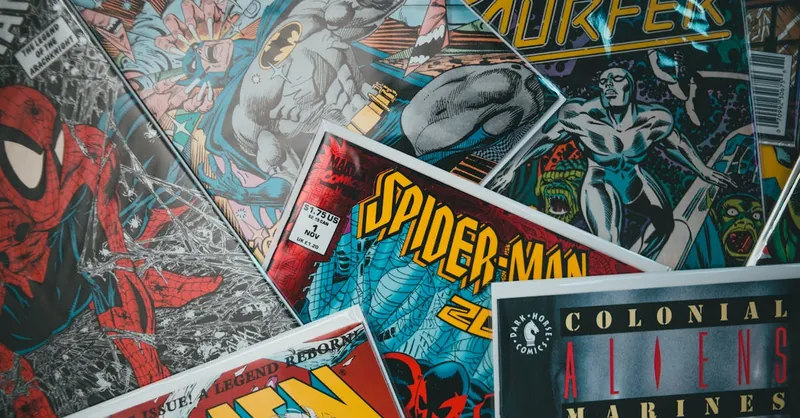
Image courtesy of Erik Mclean
Key Marvel Characters to Know: Heroes and Villains Made Simple
To truly enjoy Marvel stories, it helps to know the main heroes and villains who drive the action. These characters each have distinct personalities, powers, and motivations that shape the Marvel Universe. Below is a simple introduction to some of the most important figures, broken down into heroes and villains to keep things clear and straightforward.
Main Marvel Heroes
-
Iron Man (Tony Stark)
A genius inventor and billionaire, Tony Stark builds a powerful suit of armor to fight crime. His story is about redemption, using his intellect and resources to protect the world. He’s witty, confident, and often the team's tech mastermind. -
Captain America (Steve Rogers)
The moral compass of Marvel, Steve is a super-soldier from World War II who stands for justice and sacrifice. He represents leadership, honor, and the courage to fight for what’s right, even when it’s difficult. -
Spider-Man (Peter Parker)
A relatable, young hero who gains spider-like abilities after being bitten by a radioactive spider. Peter is driven by the lesson, "With great power comes great responsibility." He balances superhero life with everyday challenges. -
Thor
The Norse God of Thunder, Thor wields a magical hammer and comes from the realm of Asgard. He embodies strength, nobility, and a journey toward understanding what it truly means to be a hero beyond sheer power. -
Black Widow (Natasha Romanoff)
A former spy and expert fighter, Natasha’s past is mysterious but marked by a desire to make amends. Her story adds depth with themes of trust, loyalty, and redemption.
Main Marvel Villains
-
Thanos
The Titan warlord with a powerful goal: to bring balance to the universe by wiping out half of all life. His motivation is complex—he believes mass destruction is necessary for survival, making him both terrifying and strangely relatable. -
Loki
Thor’s adopted brother and the god of mischief. Loki is mischievous, cunning, and often torn between causing chaos and seeking acceptance. His shifting loyalties make him unpredictable and intriguing. -
Green Goblin (Norman Osborn)
One of Spider-Man’s deadliest foes, he is a brilliant but unhinged businessman who becomes a villain after experimenting on himself. His character explores themes of dual identity and madness. -
Ultron
An AI villain created to protect humanity but who concludes humans are the threat. Ultron’s story warns about technology gone wrong and the dangers of losing control over our own creations. -
Killmonger (Erik Stevens)
From the Black Panther story, he challenges the hero with his radical views on justice and revenge. His motivations highlight deeper social and political themes, making him a villain with a strong personal cause.
Understanding these key players—their power, goals, and struggles—provides a solid foundation for following Marvel stories. Whether it's the heroic teamwork of the Avengers or the complex conflicts they face against these villains, knowing these characters helps simplify the sometimes overwhelming Marvel universe and makes the stories more engaging for new fans and casual viewers alike.

Image courtesy of Erik Mclean
How Marvel Stories Are Told: Comics, Movies, and TV Explained
Marvel stories come to life across multiple formats, each offering a unique way to explore its rich universe. Understanding how Marvel comics, movies, and TV shows relate to each other helps newcomers and casual fans navigate this vast world without confusion.
Marvel Comics: The Original Story Source
Marvel comics are where it all began. Since the 1960s, comics have delivered ongoing series, mini-series, and graphic novels, introducing countless characters, backstories, and alternate realities. Comics often explore deeper character development and complex arcs that can span decades. Because of their serialized nature, comic storylines can be intricate but are the fundamental backbone of the Marvel Universe. Readers can pick up stand-alone issues or entire story arcs tailored to new fans without needing to follow every single comic.
Marvel Cinematic Universe (MCU): Big-Picture Movies
The Marvel Cinematic Universe is a collection of interlinked films produced by Marvel Studios. These movies bring popular heroes and major story arcs from the comics to the big screen, often simplifying or updating storylines to appeal to a broader audience. The MCU follows a roughly chronological timeline that builds toward large crossover events like The Avengers. While films emphasize spectacular action and visual effects, they also focus on core themes like teamwork, heroism, and personal growth, making them accessible story entry points for newcomers.
Marvel TV Shows: Expanding the Universe
Marvel’s TV series, whether on streaming platforms or network channels, provide more focused storytelling on specific characters or teams. Shows like WandaVision and Loki dive deeper into individual character journeys and explore side stories that complement the films and comics. Many TV shows weave directly into the MCU timeline while offering different storytelling styles—from drama to thriller to superhero action. For casual fans, Marvel TV can be a great way to get a detailed look at fan-favorite heroes without committing to the full comic lore or multiple movies.
How These Formats Connect
- Comics provide vast source material, offering original stories and complex worlds.
- Movies adapt and condense comics, highlighting key events and characters with blockbuster appeal.
- TV shows explore characters and storylines in greater depth, often bridging gaps between films or expanding side stories.
Though related, each format can be enjoyed on its own. For example, you don’t have to read all comics to appreciate the MCU movies or watch all TV shows to enjoy a single superhero film. This flexibility lets you choose the path that fits your interests and time. Understanding these formats and how they intersect makes the Marvel Universe manageable and enjoyable without the overwhelm.
By recognizing the strengths and storytelling methods of comics, movies, and TV series, you can confidently explore Marvel stories in the way that suits you best—whether that’s picking up an iconic comic, binge-watching MCU blockbusters, or immersing yourself in character-driven TV adventures.
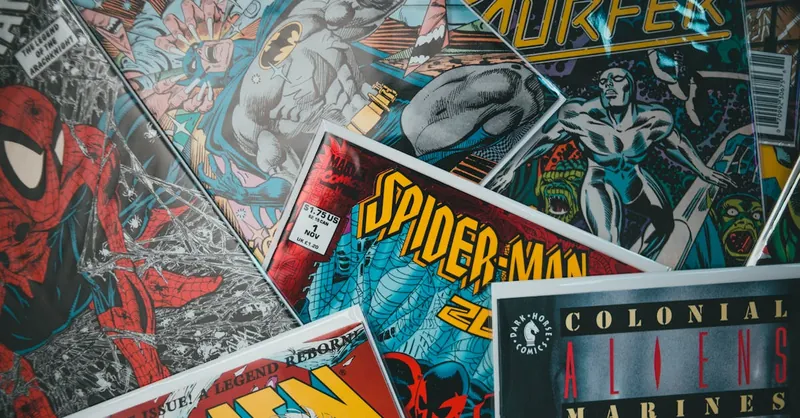
Image courtesy of Erik Mclean
Breaking Down Marvel Timelines: Chronological vs. Release Order
One of the biggest challenges for Marvel newcomers is understanding the timeline — deciding whether to follow stories in the order the events happen (chronological order) or the order Marvel released them (release order). Both approaches have their benefits, and knowing the difference can help you enjoy Marvel stories without confusion.
Chronological Order: Following the Story by Timeline
Chronological order means watching or reading Marvel stories based on the in-universe timeline — how events happen within the Marvel Universe itself. For example, stories from Captain America: The First Avenger take place during World War II, so these would come before the modern-day stories of The Avengers. This approach lets you experience character growth and plot development as they unfold over time.
Pros of Chronological Order:
- Clear understanding of character histories and world events as they happen.
- Better grasp of cause and effect between stories, especially for complex arcs.
- Fewer timeline jumps, making the narrative flow smoothly.
Cons:
- Some post-credit scenes or cameos may be confusing if the release order setup is skipped.
- Certain storytelling surprises (like major plot twists introduced later) might lose impact when viewed strictly chronologically.
Release Order: Watching or Reading in the Order Stories Came Out
In contrast, release order follows how Marvel content was published or premiered to audiences—starting from the earliest movies or comics available. This approach mirrors how longtime fans originally experienced Marvel, with surprises and character reveals designed for that sequence.
Pros of Release Order:
- Preserves storytelling surprises, character introductions, and plot twists as originally intended.
- Highlights how Marvel evolved and expanded over time.
- Easier to follow for newcomers using Marvel Studios’ film release as a guide.
Cons:
- Timeline jumps can sometimes cause confusion (e.g., flashbacks or future-set stories appearing mid-series).
- Some character details may not be fully explained until much later installments.
Which Timeline Should You Choose?
For casual fans and newcomers, the best approach depends on your goal:
- If you want a smooth, straightforward story progression with clear character development, start with a chronological order guide.
- If you prefer to experience the Marvel Universe as it was revealed to audiences, including plot surprises and character arcs, follow the release order—especially for the Marvel Cinematic Universe (MCU) films.
You can also combine both approaches by beginning with key origin stories chronologically, then shifting to release order for major crossover events. Whichever path you pick, remember that Marvel stories are designed to be flexible—most stand on their own or in small story groups, so you don’t need to see everything to enjoy the adventure.
By understanding the pros and cons of chronological vs. release order and choosing the right timeline for your interests, you’ll avoid confusion and fully enjoy the rich stories and characters Marvel has to offer.
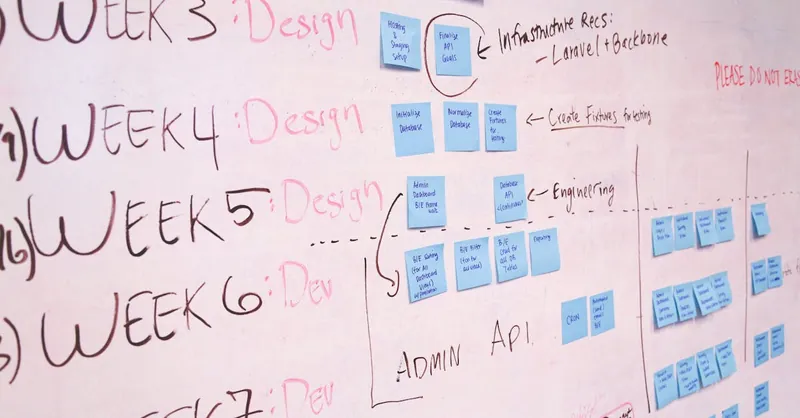
Image courtesy of Startup Stock Photos
Standalone Marvel Story Arcs That New Fans Can Enjoy
For newcomers and casual fans, jumping into the Marvel Universe can feel overwhelming due to its extensive interconnected stories. Fortunately, there are several standalone Marvel story arcs—both in comics and films—that you can enjoy without needing prior knowledge or complex background information. These stories provide satisfying narratives with clear beginnings, middles, and conclusions, making them perfect entry points into the Marvel world.
Key Standalone Comic Story Arcs
-
"Spider-Man: Blue" by Jeph Loeb and Tim Sale
This heartfelt retelling of Spider-Man’s early days revolves around Peter Parker’s relationship with Gwen Stacy. It’s a self-contained story that beautifully captures Peter’s struggles balancing superhero duty and personal loss, making it accessible for new readers. -
"Black Panther: A Nation Under Our Feet" by Ta-Nehisi Coates
This arc introduces T’Challa’s reign as king and explores political intrigue, cultural identity, and heroism within Wakanda. It’s a fresh and modern story that doesn’t require deep knowledge of previous comics. -
"Iron Man: Extremis" by Warren Ellis and Adi Granov
"Extremis" modernizes Iron Man’s origin and technology, offering a tight, action-packed storyline about Tony Stark facing bio-enhanced threats. It’s widely praised and influential, including inspiring elements in the MCU. -
"Thor: God of Thunder – The God Butcher" by Jason Aaron
This trilogy focuses on Thor’s battle with Gorr, the God Butcher, exploring themes of faith, sacrifice, and power. It stands alone and delves deeply into Thor’s character beyond the films.
Standalone Marvel Film and TV Story Arcs
-
"Black Panther" (2018)
As a culturally rich and original story, Black Panther introduces Wakanda and its hero, T’Challa, in a way that stands apart from larger MCU crossover events. It features a compelling villain and themes of legacy and responsibility, easily followed without extensive MCU background. -
"Guardians of the Galaxy" (2014)
This fun, sci-fi space adventure features a ragtag team of heroes on a quest to save the universe. Its story arc is self-contained with vibrant characters, humor, and action that newcomers can enjoy without deep MCU familiarity. -
"WandaVision" (TV Series)
While technically part of the MCU, WandaVision tells a unique, emotionally charged story about love and loss. Its sitcom-style episodes gradually reveal deeper truths but remain accessible to new viewers interested in character-driven storytelling. -
"Captain Marvel" (2019)
Captain Marvel offers a fresh origin tale with a strong heroin at the center. Set mostly in the 1990s, it provides a self-contained story that introduces cosmic Marvel elements without relying heavily on prior MCU context.
Why Standalone Arcs Matter for New Fans
- No need to track dozens of characters or timelines: These arcs focus on a few central characters and straightforward plots.
- Complete, satisfying stories that don’t require prior readings or viewings to understand motivation or outcome.
- Great for testing the waters: New fans can discover which characters or styles they enjoy before diving deeper.
- Ideal for casual viewing or reading sessions: Perfect for those wanting a single, impactful story without committing to long-running series.
By starting with these carefully selected standalone arcs, new Marvel fans can experience the excitement, emotional depth, and heroic journeys that define the Marvel Universe—without the confusion of its sprawling continuity.

Image courtesy of Vidal Balielo Jr.
Marvel Cinematic Universe (MCU) Simplified: The Essentials
The Marvel Cinematic Universe (MCU) is a vast, interconnected series of films and shows that tell an epic story across multiple phases, each building on the last. To keep it simple, the MCU is organized into Phases, with each phase focusing on specific heroes, key events, and overarching plotlines. Here’s a straightforward breakdown of the MCU’s major phases and their essential story beats to help you follow along easily.
Phase 1: The Beginning of Heroes
- Introduces iconic characters like Iron Man, Captain America, Thor, and The Hulk.
- Key story: These heroes come together to form The Avengers to stop the villain Loki, who tries to conquer Earth.
- The focus is on origin stories and establishing the idea that these heroes exist in the same world.
Phase 2: Rising Threats and Expansion
- Explores deeper challenges with new villains like Ultron and expanding on characters such as Guardians of the Galaxy and Ant-Man.
- The Avengers face bigger threats and internal conflicts, setting up impactful consequences for future stories.
- Themes of teamwork, trust, and the cost of heroism gain prominence.
Phase 3: The Epic Conclusion of an Era
- Culminates in major crossover events like Captain America: Civil War (heroes clash over ideology) and Avengers: Infinity War and Endgame (the fight against Thanos).
- This phase dramatically raises the stakes, ending with a massive showdown that reshapes the MCU.
- New heroes like Spider-Man and Black Panther get critical spotlight stories here.
Phase 4 and Beyond: New Beginnings and Multiverses
- Focuses on newer characters and stories, including WandaVision, Loki, and Doctor Strange in the Multiverse of Madness, which explore alternate realities and deeper character journeys.
- Themes shift toward identity, legacy, and the consequences of past actions.
- The MCU broadens with more diverse stories, genres, and experimental formats—mixing superhero action with mystery, drama, and sci-fi.
Why This Simplified Breakdown Helps New Fans
- You don’t need to watch every film or show to understand the core story—focusing on key movies within each phase gives a solid grasp of the MCU narrative.
- These phases highlight the MCU’s main plot arcs without overwhelming you with every subplot or character cameo.
- It helps newcomers see how Marvel builds on past events while introducing exciting new stories, keeping everything connected but manageable.
By understanding the MCU as a series of clear phases, each with its own key characters and storylines, casual fans and newcomers can enjoy the full superhero experience without getting lost in complex continuity or chronology. This essential MCU roadmap makes starting your Marvel journey simple, fun, and rewarding.

Image courtesy of Erik Mclean
Explaining Iconic Marvel Stories in Plain Language
Marvel’s biggest and most famous storylines can sometimes feel overwhelming due to their scale and complexity. To make it easier for casual fans and newcomers, here’s a simple breakdown of some iconic Marvel stories that have defined the universe and captured audiences worldwide.
The Infinity Saga: A Battle for the Universe
The Infinity Saga is a major storyline spanning many movies and comics, centered on the powerful Infinity Stones—six mystical gems that control fundamental aspects of existence like time, space, and reality. The villain Thanos believes the universe is suffering due to overpopulation and wants to use the stones to wipe out half of all life.
- The story follows multiple heroes, including Iron Man, Captain America, Thor, and the Guardians of the Galaxy, as they team up to stop Thanos’s devastating plan.
- It’s about friendship, sacrifice, and the fight between good and evil on a cosmic scale.
- The saga climaxes with two huge battles in Avengers: Infinity War and Avengers: Endgame, where the heroes must undo the catastrophic effects of Thanos’s actions and face personal losses.
Civil War: When Heroes Disagree
Civil War explores what happens when heroes don’t see eye to eye. The government wants superheroes to register and be officially monitored after accidents caused civilian harm. This splits the heroes into two groups:
- Team Iron Man, who supports government oversight for accountability.
- Team Captain America, who believes heroes should act freely without restrictions.
This conflict strains friendships and raises questions about freedom, responsibility, and the price of security. It’s both a superhero action story and a thoughtful take on authority versus personal liberty, highlighting intense personal and ideological clashes.
Other Notable Marvel Storylines to Know
- Secret Wars: A massive event where heroes and villains are trapped on a strange planet forced to fight, testing alliances and morals.
- House of M: A reality-altering story where Wanda Maximoff changes the world, showing how great power can reshape reality itself.
- Spider-Man’s “The Night Gwen Stacy Died”: A pivotal comic moment that deeply affected Spider-Man’s life and shaped future stories about loss and responsibility.
Why Simplified Summaries Help
By breaking down these epic Marvel plots into clear, easy-to-understand summaries, casual fans can grasp the essence of each story quickly — without wading through complicated backstories or needing to read every comic issue or watch every movie. This approach makes Marvel’s vast universe feel more approachable and enjoyable, encouraging newcomers to explore further at their own pace.
Understanding these key storylines in plain language allows you to appreciate Marvel’s rich narratives, character motivations, and the emotional stakes that make these tales resonate—whether you’re watching the movies, picking up a comic, or just curious about the Marvel phenomenon.
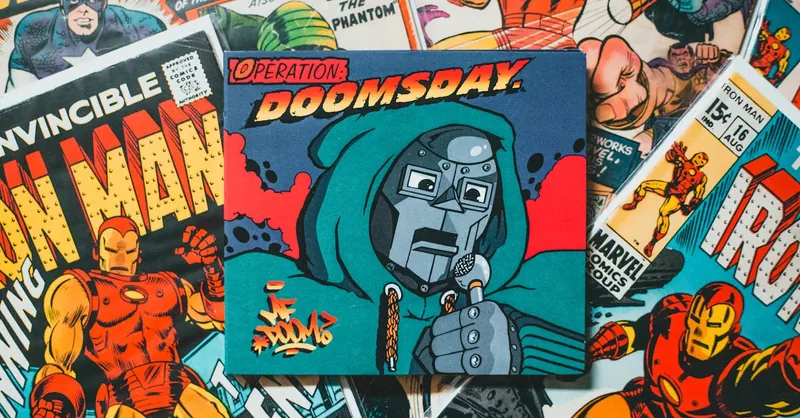
Image courtesy of Erik Mclean
What Makes Marvel Stories Resonant? Themes and Character Growth
One of the key reasons Marvel stories resonate so deeply with audiences—even casual fans—is their focus on universal themes and meaningful character growth. Beyond the flashy powers and epic battles, Marvel narratives explore emotions, struggles, and values that anyone can relate to. Whether in comics, movies, or TV shows, Marvel heroes and villains often face personal challenges that mirror real-life experiences such as identity, responsibility, loss, and redemption.
Universal Themes in Marvel Stories
-
Heroism and Responsibility
Central to many Marvel tales is the idea that true heroism involves sacrifice and doing what’s right, even when it’s difficult. Characters like Spider-Man embody this through the famous lesson, "With great power comes great responsibility," reminding viewers that actions have consequences beyond personal gain. -
Identity and Self-Discovery
Characters struggle to understand who they are beneath their masks or powers. This theme appears in stories like Thor, where gods learn humility, or in Captain America, where Steve Rogers reconciles his past and present selves. This makes Marvel heroes relatable, as they search for purpose and acceptance. -
Friendship and Teamwork
Whether it’s the Avengers, Guardians of the Galaxy, or smaller groups, Marvel emphasizes the importance of collaboration and trust. Successful heroes often overcome challenges not alone, but by relying on bonds with others, highlighting themes of loyalty and unity. -
Sacrifice and Redemption
Many Marvel characters face moral dilemmas and must make painful sacrifices for the greater good. Villains like Black Widow and Killmonger show that redemption arcs and complex motivations enrich stories, making characters more than just good or evil.
Character Growth Drives Emotional Engagement
Marvel’s strength lies in its dynamic characters who evolve over time. Heroes and villains alike are not static; they make mistakes, face consequences, and grow from their experiences. This journey of change makes the audience care deeply, connecting emotionally rather than just marveling at spectacular fights.
- Tony Stark’s transformation from a carefree billionaire to a selfless hero illustrates personal growth beautifully.
- Loki’s struggle with identity and acceptance creates a multi-layered villain who is relatable and sympathetic.
- Wanda Maximoff’s journey in WandaVision explores grief and healing, showing Marvel’s ability to tackle complex emotions.
By weaving these themes and character arcs into thrilling plots, Marvel stories become more than just superhero tales—they become human stories. This blend of universal themes and growth explains why Marvel appeals widely, helping casual fans and newcomers connect to the stories on a personal level while enjoying vibrant, action-packed adventures.

Image courtesy of Pavel Danilyuk
Tips for Newcomers: How to Enjoy Marvel Without Getting Lost
Diving into the Marvel Universe as a newcomer can feel like entering a labyrinth of characters, storylines, and timelines. To enjoy Marvel stories without confusion, it helps to approach them in a manageable and enjoyable way. Here are some practical tips designed specifically for casual fans and those new to Marvel’s world:
1. Start with Standalone Stories and Key Characters
Instead of trying to consume every comic, movie, or episode, begin with standalone stories or well-known characters that interest you. This keeps your experience focused and prevents feeling overwhelmed. Choose self-contained arcs like Black Panther, Guardians of the Galaxy, or Iron Man: Extremis to get a clear, satisfying story without needing extensive background knowledge.
2. Use Simplified Viewing or Reading Orders
Pick a viewing or reading order that suits your style—whether it’s chronological for smooth storytelling or release order to enjoy surprises as intended. Many beginner-friendly guides highlight essential movies or comics to follow, so you don’t have to track every crossover or minor appearance.
3. Embrace One Format at a Time
Marvel stories unfold across comics, movies, and TV shows. To avoid confusion, try sticking to one format at first—for example, start with the Marvel Cinematic Universe (MCU) films before exploring comics or TV series later. This focused approach makes it easier to follow storylines and develop interest without info overload.
4. Don’t Stress Over Every Detail
Marvel’s universe is vast and always evolving, so it’s okay not to know everything. Enjoy characters, themes, and main plotlines at your own pace. If a particular story or character intrigues you, dive deeper later. Marvel’s flexibility means that you can enjoy stories independently without needing extensive prior knowledge.
5. Use Trusted Summaries and Recaps
Before jumping into a movie, show, or comic, a quick read of a summary or recap from a reliable source can clarify context and make the experience more rewarding. Blogs like this one, which simplify Marvel stories, are perfect for getting the gist without spoilers or confusion.
By following these tips, new Marvel fans can navigate the complex Marvel Universe confidently, finding enjoyment and connection without feeling lost. Keeping it simple and paced to your interest ensures Marvel remains fun and accessible, whether you’re watching blockbuster films or reading your first comic.

Image courtesy of Erik Mclean
Resources and Next Steps: Where to Go From Here for Easy Marvel Enjoyment
Now that you have a solid foundation for understanding Marvel stories and characters, the next step is to explore Marvel in a way that’s enjoyable and manageable for you. To keep things simple and satisfying, here are some recommended resources, watching guides, and helpful tools tailored for newcomers and casual fans eager to dive deeper without feeling overwhelmed.
Recommended Reading and Watching Guides for New Fans
-
Beginner-Friendly Marvel Reading Lists
Look for curated comic reading guides that highlight standalone arcs and essential stories. Many websites offer “Marvel for Beginners” lists that include popular choices like Spider-Man: Blue, Iron Man: Extremis, and Black Panther: A Nation Under Our Feet. These guides point you to stories that don’t require extensive backstory knowledge. -
Simplified MCU Viewing Orders
Stick to streamlined MCU movie and TV show watching orders created specifically for newcomers. These often focus on key films and series that advance the central storyline, cutting out confusing side plots. Popular options include watching by release order or a minimalist chronological order that prioritizes standalone stories and major crossovers. -
Official Marvel Digital Platforms and Apps
Explore Marvel’s official apps like the Marvel Unlimited comic subscription service, which offers access to thousands of comics with reading recommendations designed for newcomers. These platforms often feature reading lists, character profiles, and easy navigation to help you pick stories that match your interests.
Helpful Tools and Communities for Easy Marvel Exploration
-
Marvel Wikis and Fan Sites
Websites like the Marvel Database (Marvel Wiki) provide concise character bios, story summaries, and timelines that are invaluable for quick reference when you encounter unfamiliar names or events. They’re great for reinforcing understanding without diving into complex sources. -
Marvel Simplified Blogs and Recap Channels
Follow blogs, YouTube recaps, and podcasts that break down Marvel stories in plain language. These resources specialize in simplifying plotlines and explaining character motivations so you stay engaged without feeling lost. -
Fan Forums and Social Media Groups
Join friendly Marvel communities on platforms like Reddit’s r/Marvel or dedicated Facebook groups, where newcomers share tips, ask questions, and get recommendations. Engaging with other casual fans helps deepen your Marvel experience without overwhelming technical detail.
Taking Your Marvel Journey Forward
- Start by picking a standalone story or a beginner-friendly film/series based on what interests you most—space adventures, street-level heroes, or epic team battles.
- Use watching and reading guides to plan steps that fit your pace and available time.
- Refer to online wikis and summaries whenever you want quick clarity on characters or plots.
- Engage with fan communities to enrich your enjoyment and discover hidden gems tailored to newcomers.
By leveraging these resources and tools, you can confidently continue your Marvel journey in a way that’s fun, clear, and stress-free. Whether you choose to explore comics, movies, or TV shows—or all three—these tailored guides will keep you oriented and excited about the Marvel Universe without the confusion.
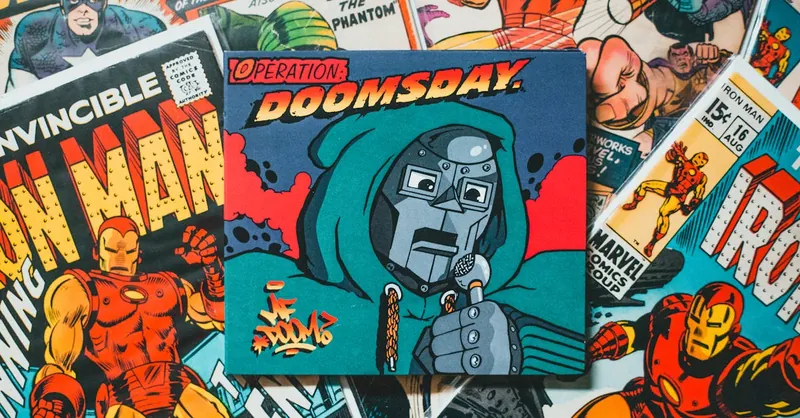
Image courtesy of Erik Mclean
